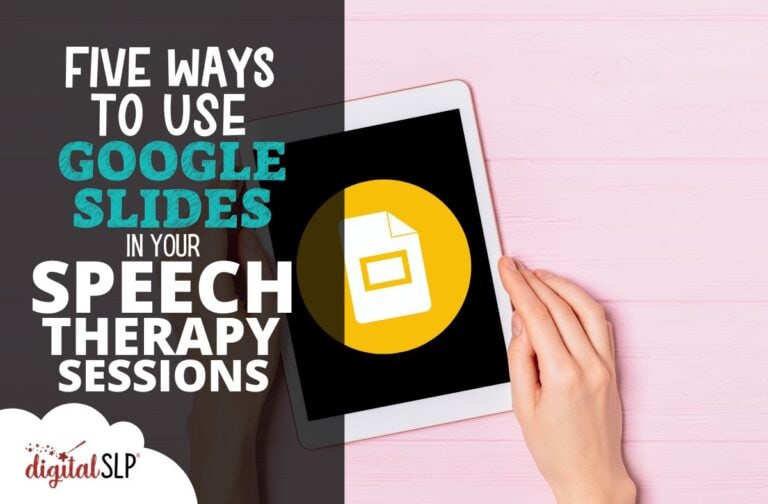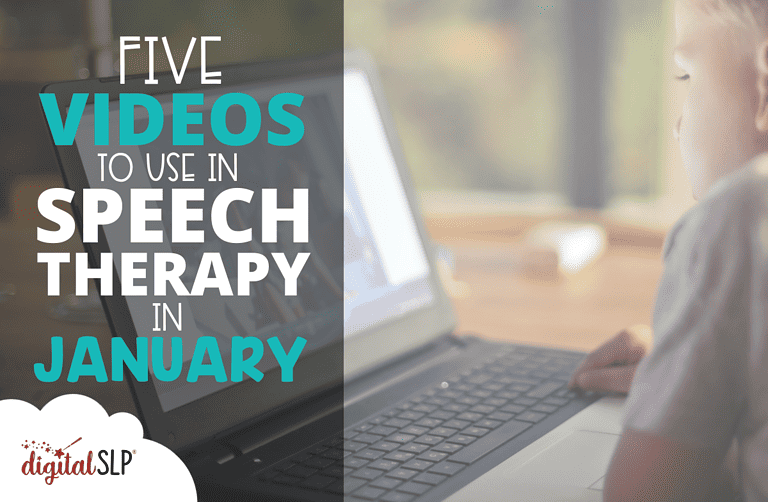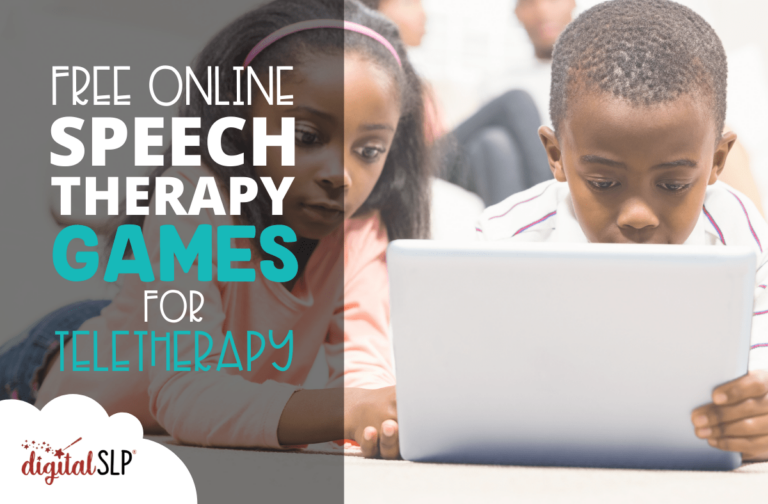Happy spring everyone! Today’s topic is all about vocabulary and how to target vocabulary in a variety of ways when treating clients via teletherapy. We will dive into how to work on vocabulary with clients of different age groups as well. I will be incorporating resources throughout this post targeting vocabulary development that also goes along with a spring theme so you can use them in your upcoming sessions!
Quick tip for targeting vocabulary development in speech therapy sessions :
When planning activities that target overall vocabulary development, try using thematic instruction within your speech therapy sessions! Integrating themes within speech therapy sessions helps to support improved vocabulary development along with additional receptive and expressive language skills. According to research, thematic instruction helps children learn basic concepts, categories, semantic mapping skills, word retrieval skills, answer wh-questions, and so much more (Maria Del Duca, 2013). All of these skills help support improved overall receptive and expressive vocabulary development.
When working with a student who is struggling with vocabulary development, try planning speech therapy sessions to go along with themes. You can even carry out the same theme over multiple speech therapy sessions to continue to provide repetition of familiar vocabulary words and concepts. Bring the theme to life through pretend play interactions, reading books, sensory play, movement-based activities, music, etc.
Using a thematic instruction approach, here are tips and resources for targeting vocabulary development with different age groups while using a springtime theme:
Preschool:
There are many different types of activities you can plan when working with young children on vocabulary development.
1. Targeting new vocabulary while engaging in play-based activities:
Whether you are conducting a speech therapy session in person or via teletherapy, try using toys and/or objects in these sessions when working on vocabulary development with younger students. Bringing in fun and interactive toys/objects within speech therapy sessions allows for increased engagement and more opportunities for vocabulary development.
Here are some examples of items you can use in sessions to work on vocabulary development with a spring theme:
- Easter Eggs: there are many different goals you can target while using Easter eggs in speech therapy sessions, all of which support vocabulary development. You can work on the child both receptively identifying colors as well as expressively labeling colors of eggs. Hide the eggs around the room and have the child find the various colors or tell you what color to find. You can also hide toys inside of the Easter eggs to go along with vocabulary development. Hide objects (or pictures of objects) that have associations with one another within the eggs (i.e. picture of sock in one egg and shoe in another – find the two pictures and put them together). You can even have the child guess what is inside each egg!
- Feed the Animal: young children love to play pretend with animals or dolls. One activity I love is “feed the frog”. You can find a frog puppet or… take a tissue box, put a picture of a frog on the box, cut out the frog’s mouth, and now you can “feed the frog!” You can talk all about frogs in your session, incorporate frog books, and then play your game where you feed the frog different silly “spring theme” pictures.
2. Using No Print resources to target vocabulary development in speech therapy:
There are many wonderful resources out there that you can incorporate into speech therapy sessions with younger children to target vocabulary development. Using fun and interactive no print resources can continue to encourage the development of language concepts along with vocabulary. I will share a few great resources from The Digital SLP site that go along with the spring theme.
Here are some examples from The Digital SLP website of resources you can use in sessions to work on vocabulary development with a spring theme:
- No Print Spring Actions Interactive Book Action Verbs: this resource targets expressive language to label the action within the picture shown. All of the pictures have a spring theme so you can talk to your students about the picture and relate them to your students’ personal experiences. Talk about puddle jumping, flying kites, or even feeding ducks! This resource also provides the opportunity to work on matching pictures.
- No Print Easter Vocab Builder: working on both receptive and expressive vocabulary development with young preschoolers, then this resource is for you! Talk all about Easter while learning new vocabulary terms. Not only are there sections to work on receptive vocabulary and expressive vocabulary, but you can also select “Learn About Easter” to read an interactive book with your students. If you are wanting to plan a vocabulary enriched session all about Easter, try using this resource and also bringing in the Easter egg idea from above!
- No Print Spring Vocab Builder: this resource is similar to the one listed above, but instead of only being about Easter it encompasses vocabulary pictures all about spring. There are many different concepts you can target using this resource and it is also a great choice when introducing the topic of spring.
Early Elementary:
There are several great resources and activities that target vocabulary development with children in early Elementary.
1. Targeting new vocabulary while engaging in activities:
as your students get a bit older, remember to continue to engage in hands-on and interactive activities along with incorporating resources in sessions. Help your students improve their vocabulary development by engaging in sensory activities, pretend-play, etc. Here are some examples of ideas you can use in sessions to work on vocabulary development with a spring theme:
- Sensory Activities: Creating sensory bins that relate to the spring theme can provide you with several opportunities to target vocabulary development. Try creating sensory bins with “grass” using green tissue paper or use beans to create “dirt”. You can cut out bugs to put in the grass/dirt and have the student describe the bugs. Or you can even cut out spring-related pictures and play a game of “I-Spy” to work on describing as well as labeling vocabulary words. Don’t worry – you can use sensory bins over teletherapy too! Create a bin and make sure your students are able to see the contents in your bin. You can still plan the same activities and the students will still remain engaged!
- Books: reading books in your sessions relating to spring allows for many opportunities to learn new vocabulary words. I especially love creating activities to go along with the books we read in order to enhance the new vocabulary terms we just learned in a more hands-on learning experience.
Here are some examples from The Digital SLP resources you can use in sessions to work on vocabulary development with a spring theme:
Language Packs and Interactive Spring-Themed Resources:
- Preschool Spring Language Pack: even though this resource says “preschool” in the title, this can be used both with preschool students as well as early elementary. This resource targets several receptive and expressive language skills, all supporting overall vocabulary development. Try working on pronouns and talking about all of the different spring-related actions. You can also try “Tell Me About It!” to work on hearing a description and labeling the spring-related object.
- Spring Elementary Language Pack: this resource is similar to the one listed above; however, it incorporates a bit more challenging skills to work on with your students. All of the activities are spring-related to continue to incorporate the spring theme in your session as your students are learning new vocabulary.
- Spring Pronouns Interactive Slides: use this resource to work on pronouns with your students while talking about the action verbs. Each picture depicts a different spring-related action (i.e. flying a kite, smelling flowers, blowing bubbles, etc.) allowing for continued opportunity for vocabulary development.
Later Elementary/Middle School/High School:
Web Activity Interactive Slides Spring Reading Passage
Using a spring-related reading passage within your session may target reading comprehension skills, story retell, as well as vocabulary development. Have your students read the passage or listen to the passage, answering the questions as you go. Talk about the vocabulary terms in the story that your students may not know. Write out those vocabulary words so you can refer back. You can also relate these passages to the student’s personal experiences (i.e. Have they gardened before? What do they know about Earth Day?, etc.). Listed below are three different spring theme reading passages you can try with your students
- Stretch-A-Sentence Language Expansion Activity: this resource may be modified for students both in middle and high school. Show the students pictures and have them describe what is happening in the picture. Prompt the student by asking “who”, “what”, “where”, “why”, and “when” questions in order to become more descriptive. These pictures allow for discussion using novel vocabulary terms to continue to work on improved vocabulary development.
I hope you have found these tips and resources helpful when targeting vocabulary development in speech therapy with students of all levels. Have fun planning your upcoming sessions all related to spring!













Recent Comments